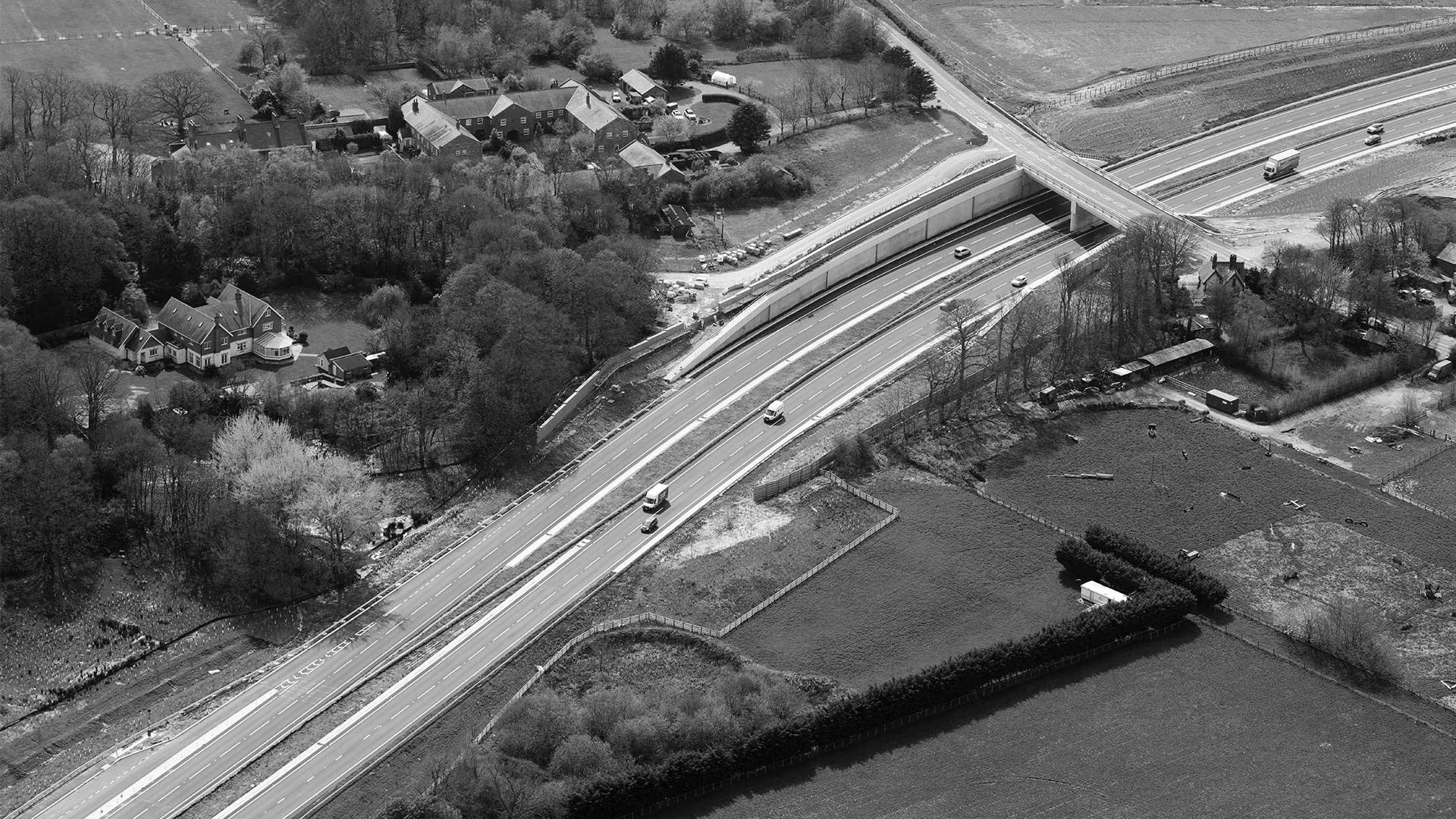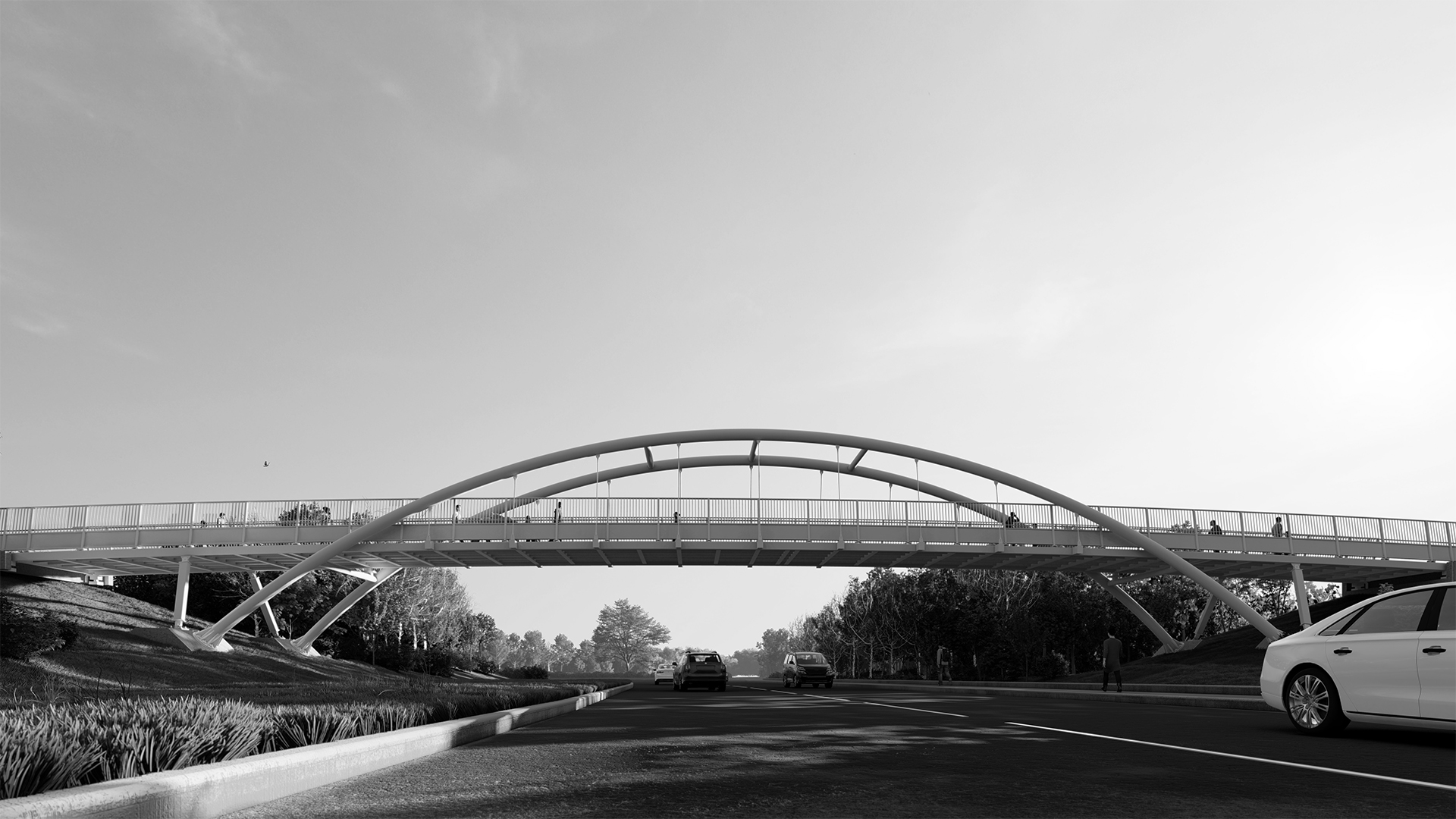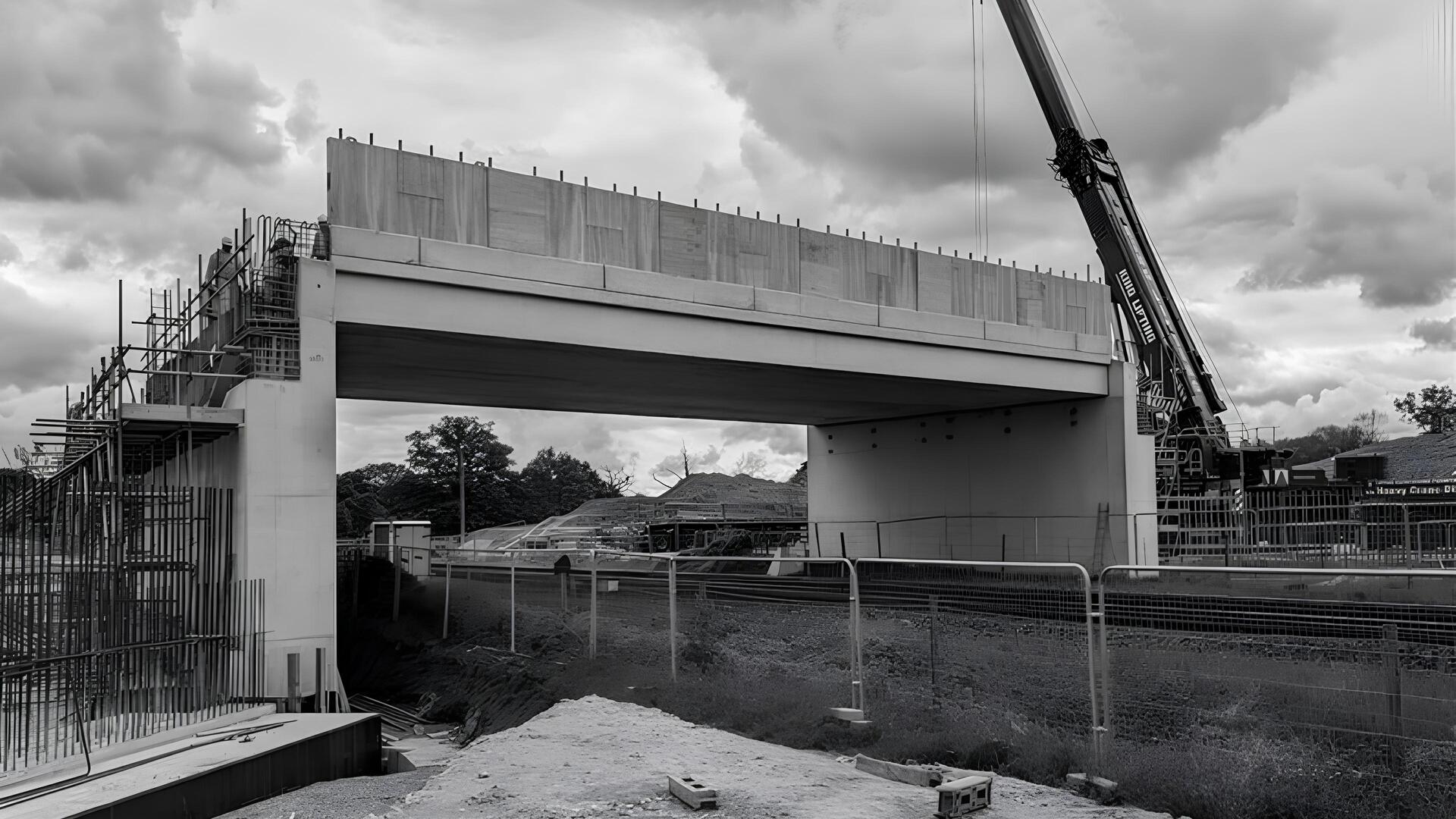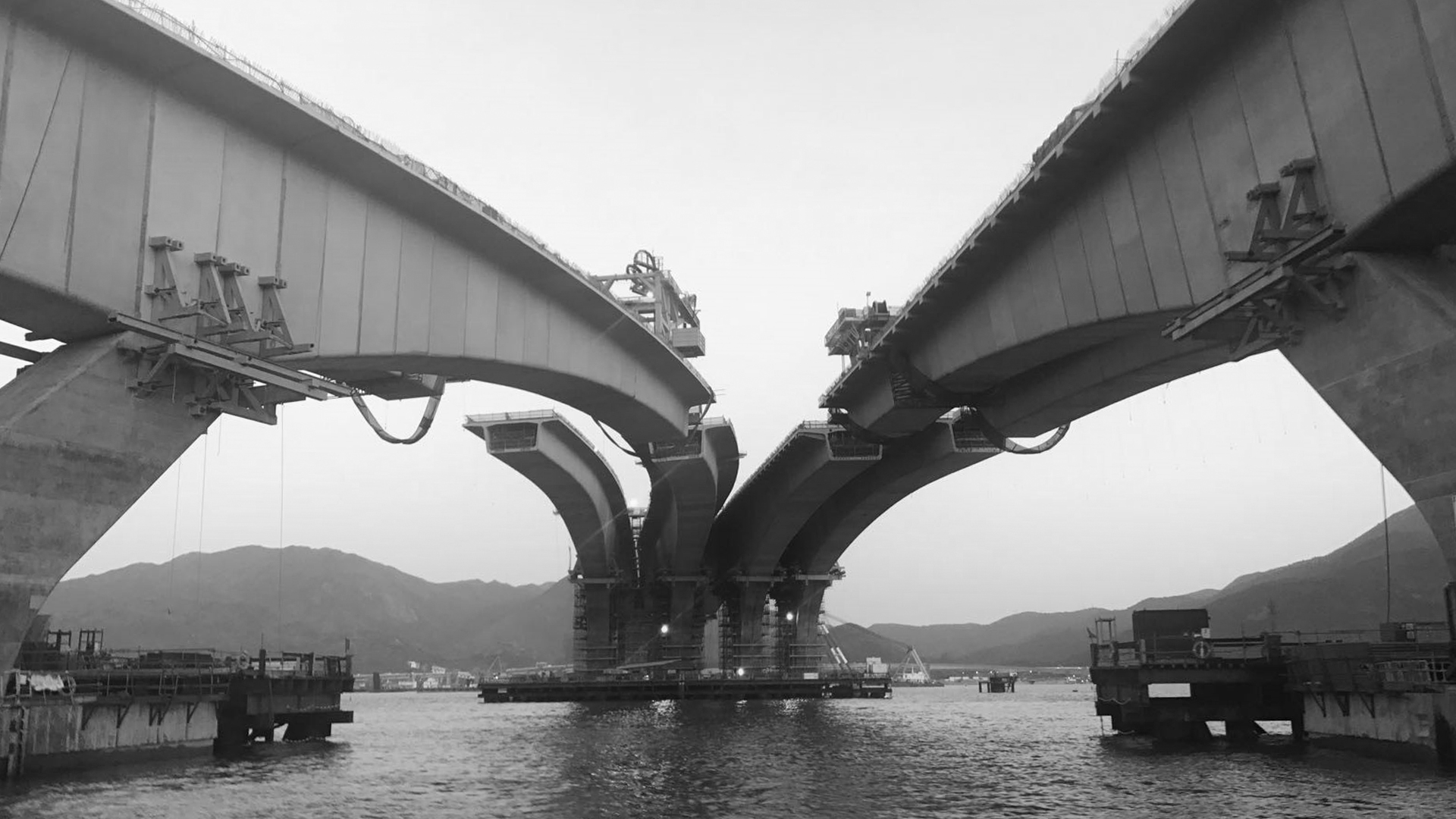Stonecutters Bridge
Hong Kong, Tsing Yi
Project synopsis
Independent checking engineer for the temporary and permanent works for the construction phase
Contractor
Maeda-Hitachi-Yokogawa-Hsin Chong Joint Venture
End client
Hong Kong Highways Department
Stonecutters Bridge spans 1018m, has two towers each of 298m, and straddles the Rambler Channel at the entrance to Kwai Chung Container Port.

The deck is a steel orthotropic box in the main span, and a pair of complex prestressed concrete box girders in the back span.
Tony Gee was appointed as the Independent Checking Engineer for all the temporary works, including the deck lifting equipment and temporary falsework for back span construction.
This included earthquake seismic analysis and the effects of typhoon wind buffeting. There were also a significant number of contractor’s design items to be checked, including the permanent deck access gantries, permanent maintenance gantries, the lateral bearings, and the steel box dehumidification system.
The most significant element of the work was the check of the contractor’s erection proposals, in terms of its effect on the permanent works. For this, a stage-by-stage analysis of the complete bridge was developed using LARSA finite element software. The results of this analysis were compared with those of the contractor’s designer to ensure the bridge was not overstressed at any point during construction and to verify that the final bridge geometry complied with the specification requirements.
There were many challenges in a project of this size. It was necessary to continue to refine analysis models and software as construction progressed, to examine all the effects that could be encountered. At critical phases, for example the larger lifts, additional engineering support was provided on site to both check procedures and work with the contractor to gain the necessary approvals and address any last-minute changes, so that work could proceed.
We also had engineers on site to certify that the temporary works construction was being undertaken to the drawings. Having a well-qualified team on site was especially important to be able to address both the technical and practical aspects of temporary works design.
Discussion between the site team and contractor enabled us to develop a priority system for the large volume and frequency of document receipts, so that resources could be channelled efficiently and responses given promptly.
Recommended Reading




